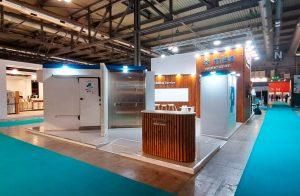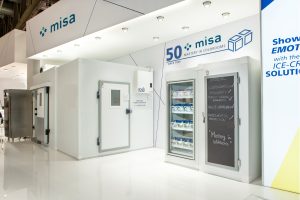A REGULATORY GAP TO BE FILLED
In the world of refrigeration, every detail matters—especially when it comes to energy efficiency. Refrigerated cabinets and other equipment are subject to strict European regulations that impose design and energy classification standards. Yet, a key component of the cold chain—cold rooms—still escapes these directives, meaning they can be sold without any reference parameters to assess their performance.
This legislative gap risks slowing down innovation and penalizing companies that invest in more sustainable solutions.
We spoke with Roberto Bruni, Head of R&D at MISA, to understand how MISA is tackling this challenge by developing technologies that anticipate tomorrow’s trends.
Cold rooms are a key element in refrigeration systems. Why do you think they are still excluded from energy labelling regulations?
I can confirm that cold rooms are indeed a key element in refrigeration. Yet, they are still not subject to energy labelling obligations—an issue that raises more than one question.
The EN ISO 16855 standard provides criteria for evaluating the energy performance of cold rooms, but there is still no mandatory energy label. This means that, unlike other systems regulated by Ecodesign and Energy Labelling Regulations, cold rooms can be placed on the market without any classification of their performance.
The result? Customers choosing a cold room have no tools to compare efficiency across different solutions, and the lack of regulation penalizes manufacturers—like MISA—that invest in advanced and high-performing technologies. It is worth noting that a large portion of cold rooms currently installed across Europe show low energy performance, mainly due to inefficient insulation. Regulating this aspect would mean cutting consumption by several terawatt-hours, resulting in a significantly reduced environmental impact.
MISA has already made specific choices to improve the efficiency of its cold rooms. What are the main innovations you are working on?
MISA is investing in innovation to enhance the energy efficiency of its cold rooms. Its goal is to stay ahead of future standards by developing solutions that reduce energy consumption and improve overall sustainability.
One example is our panels, designed with increasingly lower thermal conductivity to ensure maximum insulation and minimize heat loss. Additionally, our cold rooms are now integrated with intelligent temperature control systems, allowing automatic performance regulation and reduction of energy waste. For more complex applications, our solutions can be connected to Building Management Systems (BMS), enabling remote control of operating parameters for more efficient management.
At the same time, we are expanding our range of natural gas-based solutions, such as R290 and CO₂, which offer environmentally friendly alternatives to synthetic refrigerants. This path of innovation stems from the synergy with other companies in the Purever Industries group, enabling MISA to continue developing cold rooms aligned with the highest efficiency standards—convinced that sustainability is a non-negotiable requirement in the future of refrigeration.





